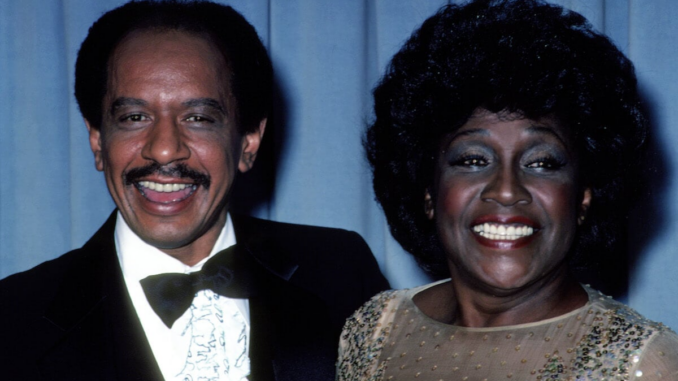
When you think of classic sitcoms, The Jeffersons undoubtedly comes to mind. This groundbreaking show not only entertained audiences but also tackled serious social issues with humor and heart. However, there’s a lot more to this iconic series than meets the eye. In this article, we’ll explore the untold truths of The Jeffersons, shedding light on behind-the-scenes stories, the cast’s experiences, and the show’s cultural impact.
The Birth of a Cultural Phenomenon
A Spin-Off Success
The Jeffersons debuted on January 18, 1975, as a spin-off of All in the Family. Creator Norman Lear wanted to explore the lives of George and Weezy Jefferson, who were introduced in the earlier series. This transition from supporting characters to leading roles marked a significant moment in television history.
A Bold Concept
The premise of The Jeffersons revolved around an African American family moving to a luxury apartment in Manhattan. This narrative challenged stereotypes and highlighted the struggles and triumphs of African Americans during a time when such stories were rarely told on television.
Behind the Scenes: The Cast and Crew
Sherman Hemsley: The Face of George Jefferson
Sherman Hemsley, who played George Jefferson, brought a unique charisma to the character. Hemsley’s performance was marked by his sharp wit and comedic timing, making George one of the most memorable characters in sitcom history. However, many fans may not know that Hemsley initially struggled to find work before landing this iconic role.
Isabel Sanford: A Trailblazer as Weezy
Isabel Sanford portrayed Louise “Weezy” Jefferson, showcasing a strong and loving wife who was not afraid to stand up to her husband. Sanford was one of the first African American actresses to star in a primetime sitcom, breaking barriers for future generations. Her portrayal earned her an Emmy Award, a significant achievement in a time when such recognition was rare for Black actors.
The Supporting Cast: Unsung Heroes
While George and Weezy were the stars, the supporting cast played crucial roles in the show’s success. Characters like Florence Johnston, played by Marla Gibbs, and the quirky neighbor Harry Bentley, portrayed by Paul Benedict, added depth and humor to the series. Each actor brought their unique flair, contributing to the show’s overall charm.
Cultural Impact and Legacy
Addressing Social Issues
One of the most remarkable aspects of The Jeffersons was its willingness to address serious social issues, including racism, classism, and the complexities of interracial relationships. The show tackled these topics with humor, prompting viewers to engage in meaningful conversations about society.
Breaking Stereotypes
The Jeffersons broke down stereotypes by portraying a successful African American family living in a predominantly white neighborhood. This representation was groundbreaking at the time and paved the way for future shows that aimed to depict diverse narratives.
The Show’s Evolution
Changes in Storylines
As the series progressed, the storylines evolved to reflect the changing social landscape of the late 70s and early 80s. The show addressed topics such as the challenges of upward mobility, generational conflicts, and personal growth, making it relatable to a broad audience.
The Finale: A Fitting Conclusion
The series concluded on July 2, 1985, after 11 successful seasons. The finale was a celebration of the characters’ journeys and the impact they had on television. It left fans with a sense of closure while solidifying the show’s legacy as a cultural icon.
Behind the Laughter: Untold Stories
Off-Screen Friendships
The camaraderie among the cast members extended beyond the set. Sherman Hemsley and Isabel Sanford developed a close friendship during filming, often supporting each other in their personal lives. This bond translated into their on-screen chemistry, making their performances even more authentic.
Challenges Faced by the Cast
Despite the success, many cast members faced personal challenges. For instance, Marla Gibbs experienced significant loss but channeled her emotions into her performances, adding depth to her character, Florence. These real-life struggles contributed to the authenticity of their portrayals.
The Jeffersons in Popular Culture
Influence on Modern Sitcoms
The Jeffersons set a precedent for future sitcoms that sought to address social issues and portray diverse characters. Shows like The Fresh Prince of Bel-Air and Black-ish owe a debt of gratitude to the path paved by The Jeffersons.
Memorable Catchphrases
The series introduced several iconic catchphrases, most notably George Jefferson’s famous line, “We’re movin’ on up!” These memorable quotes have become part of pop culture, often referenced in other media.
The Untold Truth: Behind the Curtain
Director’s Vision
The show’s directors played a crucial role in shaping its tone and style. They encouraged the cast to bring their personal experiences into their performances, resulting in authentic portrayals that resonated with viewers.
Fan Reactions and Criticism
While the show received critical acclaim, it also faced criticism for its portrayal of certain issues. However, the creators remained committed to tackling difficult subjects, believing that humor could facilitate important conversations.
Conclusion
The Jeffersons is more than just a sitcom; it’s a cultural landmark that broke barriers and addressed crucial social issues. By exploring the untold truths behind the show, we gain a deeper appreciation for the cast, their struggles, and their triumphs. As we remember the laughter and lessons from The Jeffersons, let’s celebrate its legacy and the impact it continues to have on television today.
